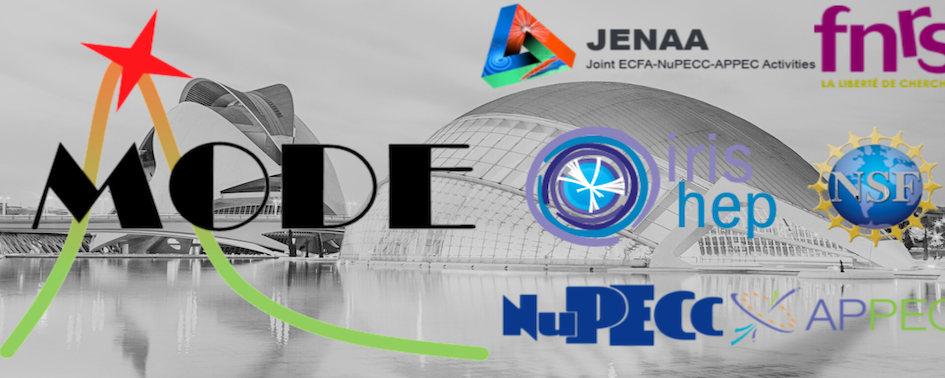Speaker
Description
The application of neural networks in medical physics has shown significant promise in improving imaging techniques and treatment verification. The IRIS group of IFIC (Valencia) is an expert in developing Compton cameras for medical applications. The group employs neural networks to enhance the performance of such devices in different aspects. This work summarizes three key research studies where neural networks were employed to address challenges in Compton camera imaging.
The first study focuses on enhancing Compton camera imaging for multi-energy radioactive sources using neural networks for event selection. A Compton camera prototype (MACACO III) with monolithic LaBr3 crystals and silicon photomultiplier arrays was utilized to gather experimental data from a circular array of 22Na sources. The prototype and the circular array were simulated with Gate v8.0 code to obtain data for neural network training. The trained neural networks were used to classify simulated and
experimental data for selecting good events and rejecting background prior to image reconstruction. The trained models effectively selected useful events for the reconstruction algorithm and rejected background noise, resulting in significantly improved image quality compared to setting energy thresholds. This approach demonstrated the potential for neural networks to enhance the accuracy and quality of Compton camera imaging.
The second study aims to determine the photon interaction positions within a monolithic LaBr3 crystal using convolutional neural networks. Simulations were performed to generate training data for the neural network model. The light collected by the pixels of the photomultiplier array was recorded to generate images employed to train and test the model. The model's performance was evaluated based on full width at half maximum, Euclidean distance, and mean absolute error. The trained model demonstrated superior performance in predicting both 2D and 3D interaction positions, including the depth of interaction, compared to traditional analytical methods. This advancement is significant for improving the spatial resolution and accuracy of photon interaction positioning in medical imaging, leading to better diagnostic capabilities. The work is being extended to experimental data.
The third study explores a neural network-based method for signal event selection in Compton camera imaging, specifically for proton range verification in hadron therapy. Data were collected using the Compton camera prototype MACACO III at a clinical cyclotron facility and the same setup was simulated to train a neural network model for data selection. The neural network approach was compared to a traditional energy-cut method. Results indicated that the neural network method substantially increased the signal percentage and improved the precision in detecting millimetric shifts in depth-dose distribution. This enhancement is crucial for accurately monitoring and adjusting proton therapy treatments, ensuring better targeting of tumors and sparing healthy tissues.
These studies collectively highlight the transformative impact of neural networks in medical physics. By improving event selection in Compton camera imaging, accurately determining photon interaction positions and enhancing proton range verification, neural networks offer powerful tools for advancing medical imaging and treatment techniques. The findings presented underscore the broad applicability of machine learning in addressing complex problems in medical physics, paving the way for future innovations and improved patient care.
